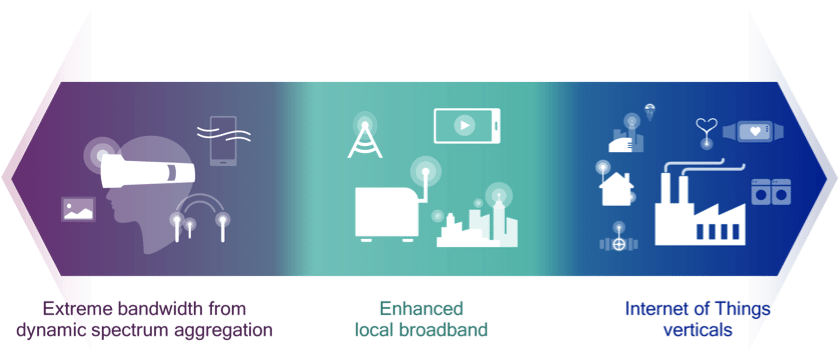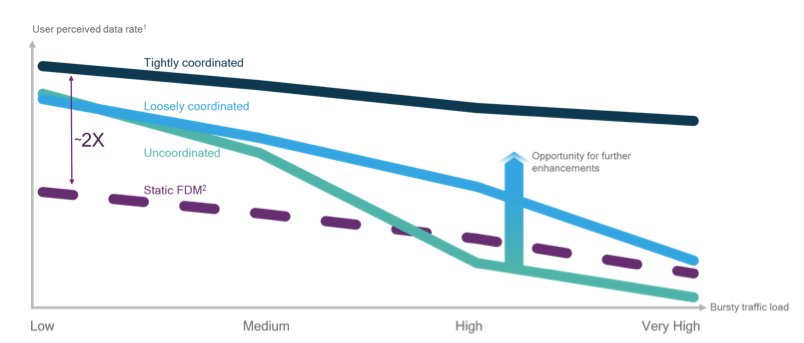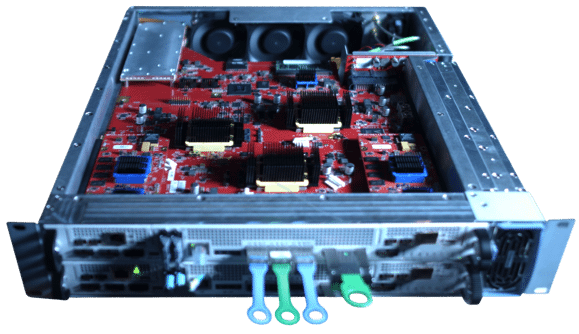With the acceleration of the 5G New Radio (NR) standards, the interest in 5G shared spectrum grows. The good news is that 5G NR is designed to operate over a wide array of spectrum bands, from low bands below 1 GHz and mid bands from 1 GHz to 6 GHz, to high bands such as mmWave. In addition, 5G NR is also designed to operate across different spectrum types, from licensed spectrum to unlicensed and shared spectrum (Figure 1).

5G NR promises to support a wide variation of requirements from extreme bandwidth to use cases such as immersive virtual and augmented reality, connecting the massive Internet of Things and enable mission-critical services with sub-millisecond latency. So far, the main industry focus for 5G NR has been on licensed spectrum. It is important, however, to note that access to shared/unlicensed spectrum can extend 5G in multiple dimensions, including enhanced end-user data rates with opportunistic access to more spectrum, more efficient local and private network operation, and new deployment use cases for industrial applications. 5G NR is designed to natively support all spectrum types with the flexibility to take advantage of potentially new spectrum-sharing paradigms, thanks to the design of frame structure with forward compatibility. This creates opportunities for new innovation to take spectrum sharing to the next level in 5G.
For mobile operators, 5G spectrum sharing will enable operators to opportunistically aggregate more spectrum to dynamically support extreme bandwidths for fiber-like experiences. Additionally, 5G spectrum sharing can extend the benefits of 5G NR technologies and the ecosystem to entities that do not have access to licensed spectrum, such as cable operators, enterprises and IoT verticals (Figure 2).

Qualcomm Technologies is already pioneering spectrum-sharing technologies in LTE with concepts such as:
- LTE Unlicensed (LTE-U) and Licensed Assisted Access (LAA) that aggregate licensed spectrum with shared/unlicensed spectrum
- MulteFire that enables high-performance cellular technology to operate stand-alone in unlicensed spectrum
- Citizen Broadband Radio Service (CBRS) where multiple deployments can share spectrum with a higher prioritized incumbent
We are building and expanding on these concepts in 5G NR, and yet adding innovations around new spectrum-sharing paradigms. So what are these new innovations? As already mentioned, a main disadvantage of unlicensed/shared spectrum is the lack of QoS guarantee. Concepts such as QoS are nowadays taken for granted in licensed spectrum, but are more challenging when sharing spectrum. As such, some of the innovation is focused on making spectrum sharing operate robustly to approach the predictable performance of licensed spectrum while maintaining the flexibility.
Another area of innovation is to improve the overall spectrum utilization when sharing the spectrum among multiple deployments. This can be achieved by dynamic listen-before-talk at lower loads, since collisions are less likely and gains are seen from trunking efficiency over a fixed-resource partition when combining traffic in the same spectrum. At higher loads, however, achieving higher performance with dynamic sharing over a fixed-resource partition is more challenging due to more collisions. This is another area for new innovation that, with a clever coordinated sharing mechanism, one can achieve significant performance merit with dynamic spectrum sharing across loading conditions as illustrated by our early simulation results (Figure 3).

This week we announced a 5G NR spectrum-sharing prototype system (Figure 4). We will use this testbed to both drive and track 5G NR standardization in the area of spectrum sharing. Next year, the focus of the testbed will be on technology development, but we are already planning to follow up with field trials with industry leaders. This testbed adds to our existing 5G NR sub-6 GHz and millimeter wave prototype systems. We are excited to bring additional innovation to 5G in the area of spectrum sharing and we see a lot of potential for 5G to leverage all spectrum types in both licensed and unlicensed as well as new shared-spectrum paradigms. To learn more about 5G shared spectrum please watch our webinar.


